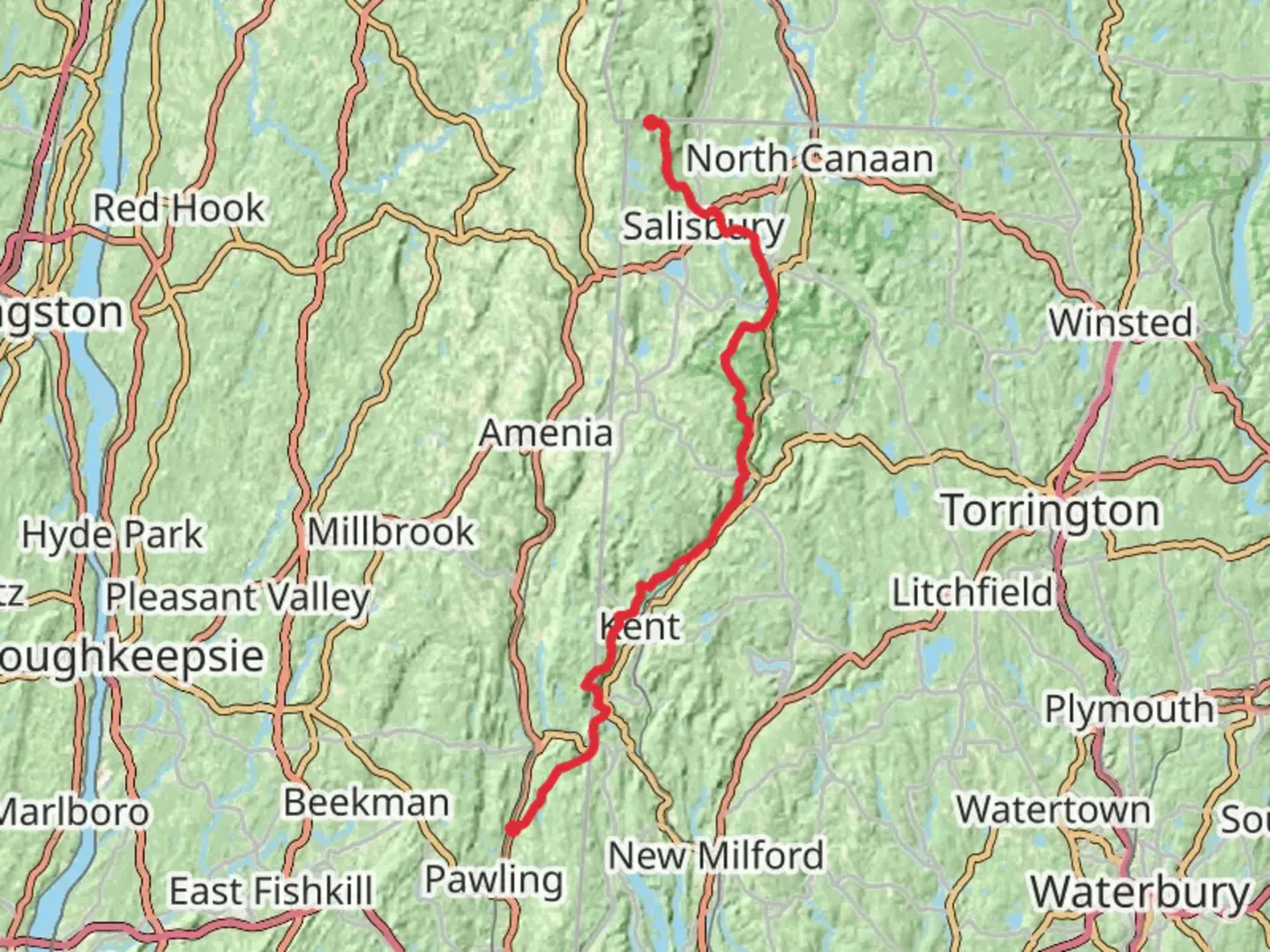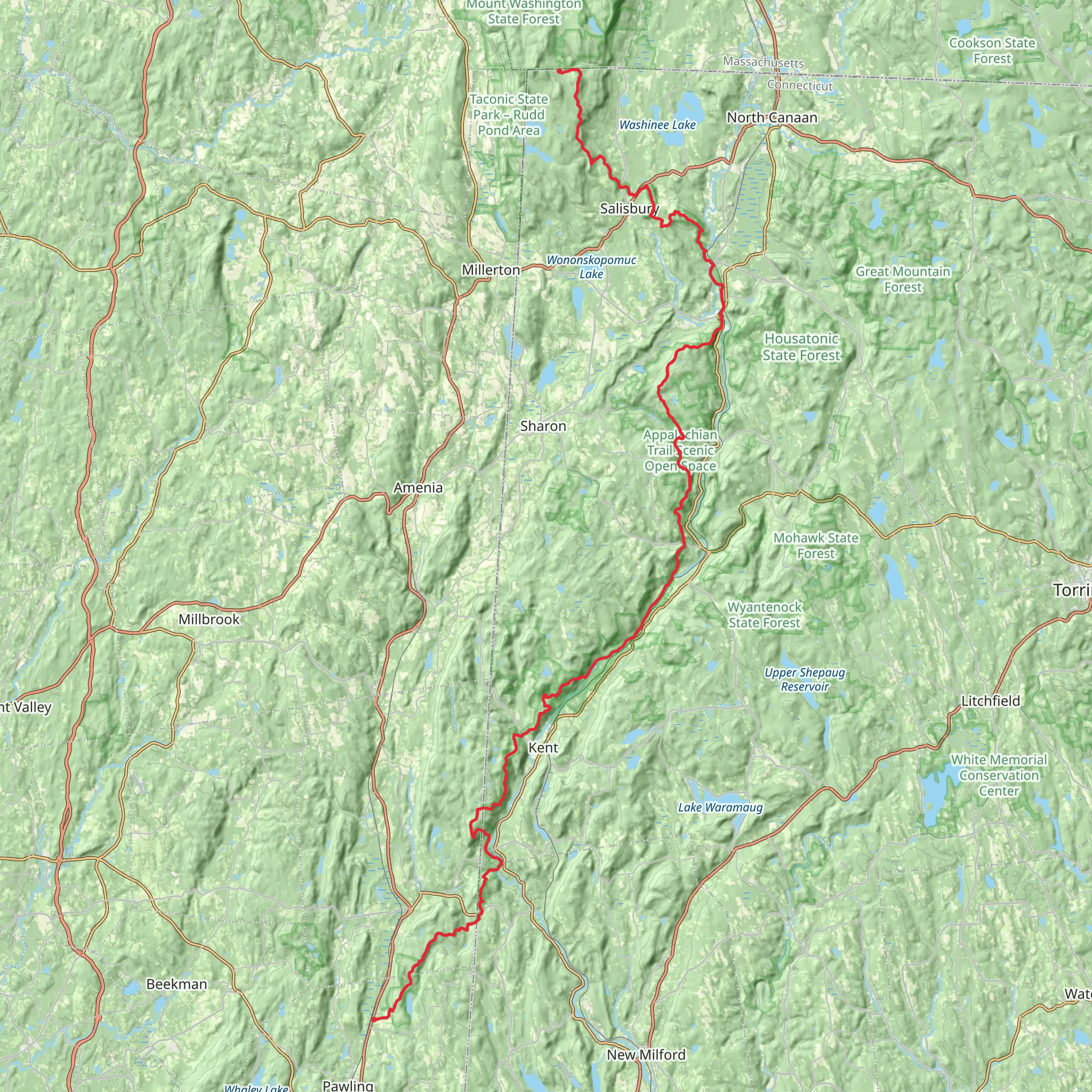
Appalachian Trail Section Hike - Sage Ravine to Pawling
Download
Preview
Add to list
More
92.3 km
~6 days
2314 m
Multi-Day
“Trek the Appalachian Trail from Sage Ravine to Pawling for a historic, scenic, and challenging adventure.”
Embarking on the Appalachian Trail Section Hike from Sage Ravine to Pawling offers a challenging yet rewarding experience, covering approximately 92 kilometers (57 miles) with an elevation gain of around 2300 meters (7546 feet). This point-to-point trek traverses the natural beauty of the Northeastern United States, taking hikers through a variety of landscapes, from dense forests to panoramic ridgelines.
Getting to the Trailhead
The trailhead near Litchfield County, Connecticut, is accessible by car and public transportation. For those driving, parking is available near the start of the trail at Sage's Ravine. If you're using public transport, the nearest significant landmarks are the towns of Salisbury, CT, and Sheffield, MA, where you can find local buses or taxi services to reach the trailhead.
Navigating the Trail
Hikers can rely on HiiKER for detailed maps and navigation tools to guide them through the trail. The path is well-marked with the iconic white blazes characteristic of the Appalachian Trail. However, due to the trail's length and difficulty, it's essential to plan your hike carefully, considering overnight camping spots and water sources.
Landmarks and Natural Features
As you begin your hike, you'll be greeted by the serene beauty of Sage's Ravine, where cascading waterfalls and lush greenery set the tone for the journey ahead. Approximately 10 kilometers (6.2 miles) in, Bear Mountain awaits, standing as Connecticut's highest peak. Here, you'll find a stone pyramid erected by the Civilian Conservation Corps in the 1930s, offering a nod to the region's historical significance.
Continuing north, the trail crosses into Massachusetts, where Mount Everett offers another challenging ascent. At around the 30-kilometer (18.6-mile) mark, the elevation gain is noticeable, and the views from the summit are a fitting reward.
Wildlife and Flora
The trail is home to a diverse array of wildlife, including black bears, deer, and numerous bird species. Hikers should be aware of their surroundings and practice bear safety measures, such as hanging food in bear bags or using bear-proof containers.
The flora along the trail changes with the seasons, showcasing vibrant wildflowers in the spring and a spectacular display of fall foliage. The diverse ecosystems you'll encounter include hardwood forests, conifer stands, and wetlands, each supporting unique plant and animal life.
Historical Significance
The Appalachian Trail itself is a piece of living history, conceived in the 1920s and completed in 1937. It has since become a symbol of conservation and outdoor recreation. The trail passes through areas that have been significant in early American history, including Native American trade routes and colonial settlements.
Preparation and Planning
Given the trail's difficulty rating, hikers should be well-prepared with proper gear, including sturdy hiking boots, weather-appropriate clothing, and a reliable means of water purification. It's also wise to inform someone of your itinerary and expected return time.
Conclusion
The Appalachian Trail Section Hike from Sage Ravine to Pawling is a journey that offers a deep connection with nature, a test of physical endurance, and a glimpse into the history of the American wilderness. With careful planning and respect for the natural environment, hikers can look forward to an unforgettable adventure on one of the most iconic trails in the United States.
Comments and Reviews
User comments, reviews and discussions about the Appalachian Trail Section Hike - Sage Ravine to Pawling, Connecticut.
4.49
average rating out of 5
1726 rating(s)
